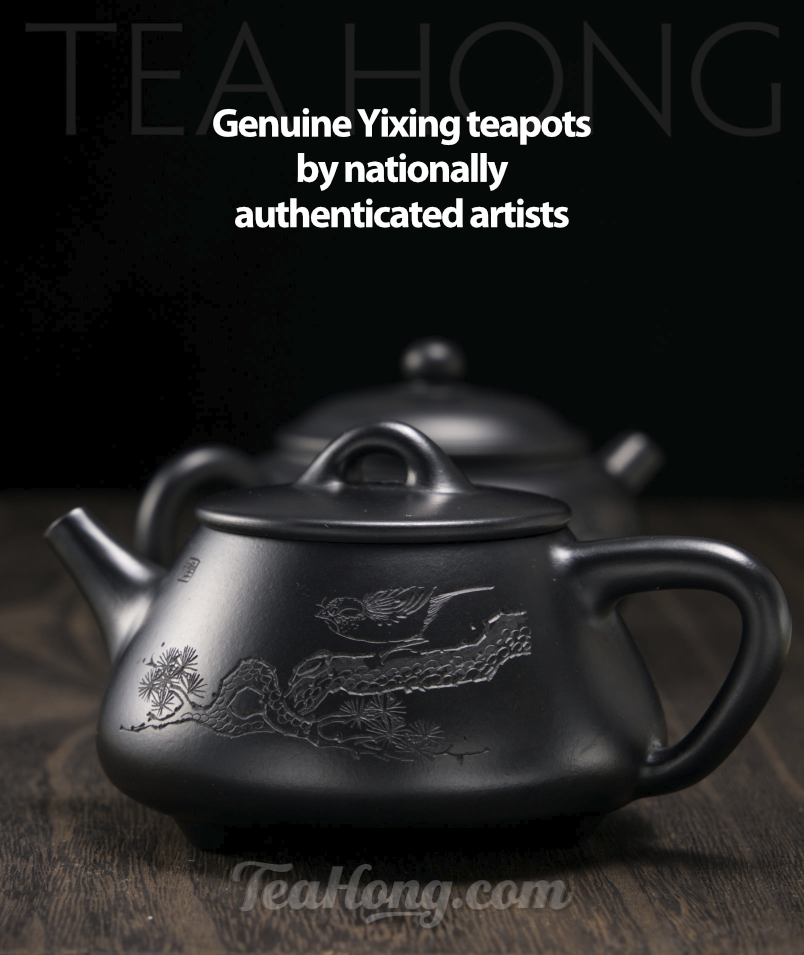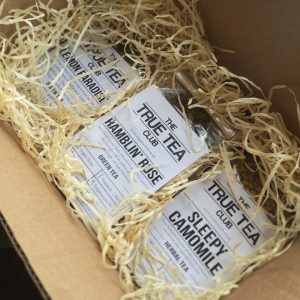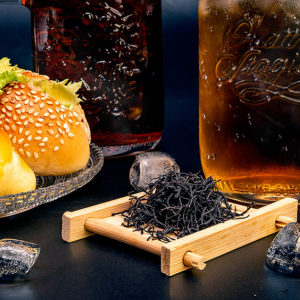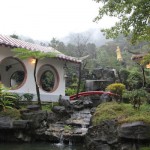Categorization of Teas
- Standard infusion colour of a freshly processed green tea: Longjing
- Standard infusion colour of a freshly processed white tea: Fuding White Peony
- Standard infusion colour of a freshly processed oolong tea: Phoenix Huangzhi Xiang
- Standard infusion colour of a freshly processed special grade Tanyang Gongfu black tea
- Standard infusion colour of a puer: Imperial Golden Tip
- Standard infusion colour of a freshly processed crafted tea: Xuri Dongsheng Dragon Ball
the categories
In order for the great varieties of teas available today to be definitive in a singular categorization concept, we have refined the currently most employed concept a little more logically to give you a 5+1 category system:
- Green teas
- Lightly oxidized teas
- Oolongs
- Black teas (Red teas)
- Post-fermented teas (Dark teas)
- Modified teas
green teas
The leaf is briefly wilted to lose water and then heated to stop any enzyme activities before it is completely dried. Green tea can be further categorized by the different methods with which this heating process is done:
Sun-drying
Steaming
Baking
Roasting or Pan/Wok-roasting ( often mis-translated as frying )
Some people would also further categorize by the shape the leaves are made into, but with so many variations happening throughout different production facilities in China alone, it is better to stick to the above simple method to avoid confusion.

A tea master airing freshly plucked leaves while they are being withered before being roasted. Take note of the very soft shadows in the photo — green tea withering is typically done in the shade. Another tea master is in the back performing the roast, employing the traditional wok in a wooden casing of electric heating, a standard piece of equipment in smaller green tea farms in China.
Fine productions that are in the category of green tea vary in taste, appearance, and requirements in infusion quite dramatically, unlike generic products that carry the same name. <read more about green teas>
lightly oxidized teas
This category includes those teas that are lightly oxidized (fermented) while the leaf structure is not manipulated for the process. Because of the natural appearance of the leaves, very often they are mistaken as green teas and vice versa. The light tasting white teas and yellow teas, in addition to the pungent and strong shengcha puers, are included in this category.
The concept of this category is refined right here by us in this site. Other people have not done it this way before, but since this is more logical and fits better with what really is happening, very soon you will see this concept applied elsewhere. <read more about lightly oxidized teas>

Leaf-withering in oolong country — notice that the leaves are laid directly under the mid-day sun. The leaves are spread thinly on flat baskets as different from the deep ones used for green teas.
oolongs
Justifiably referred to as blue teas in Chinese by some, the young leaf is let grown to a slightly larger size (therefore relatively deeper green than the colour of the young buds) before plucking to undergo maybe the most meticulous production processes. The products are characterized by a distinct partial oxidation that gives the category a great taste and aromatic spectrum, allowing varying gastronomic delights in different varieties. There are currently four major oolong regions:
Phoenix, Guangdong Province
Anxi, Fujian Province
Wuyi, Fujian Province
Taiwan
This is my favourite tea category because of the breadth and depth in their epicurean characters. <read more about oolongs>
black teas (aka red teas)
The fully oxidized (aka fermented) teas. Though a majority is made through a production line of machines, some are still made manually in the traditional style. The more tedious and experience-demanding traditional processes yield very different qualities than those mass market products made through automated processes. Not only do they have distinctive regional looks, but also taste characters that reflect both the locality, plant variety and the work of the maker. Referred to as “Red” tea in the Far East, both the liquor and the infused leaves are reddish in colour rather than black. <read more about black teas>
post-fermented teas (aka dark teas)
Of all the tea categories, this is the only truly fermented one — tealeaves that has been put through a microorganism-induced fermentation (rather than enzyme induced oxidation as in other teas). The infused liquor gives a much darker colour than any other teas. Some selections are sweet, aromatic and lingering but some others can be nasty, coarse and tannic. It is a most popular dimsum restaurant staple tea while some selections can be extreme price-fetchers (what about a 335 g dark tea discus for forty grands?). Frequently referred to also as “Puers” and experiencing an identity crisis and market crashes, this tea category is as problematic as it is intriguingly unique and surprising. <read more about post-fermented teas>

Worker covering pile of tealeaves for undergoing post-fermentation during puer production. Menghai, Yunnan
modified teas
After the tealeaves have been manufactured, some selections would undergo further steps to change either the appearance or taste. They are categorized as modified teas. We have included in this category those that are scented, crafted (textured), compressed, grounded, mixed with other ingredients, etc. Teas that are modified may occupy the largest proportion of products available in the market today, and therefore the smallest percentage of them are of fine quality. However, some are really worth experiencing and are listed respectively. <read more about modified teas>
















